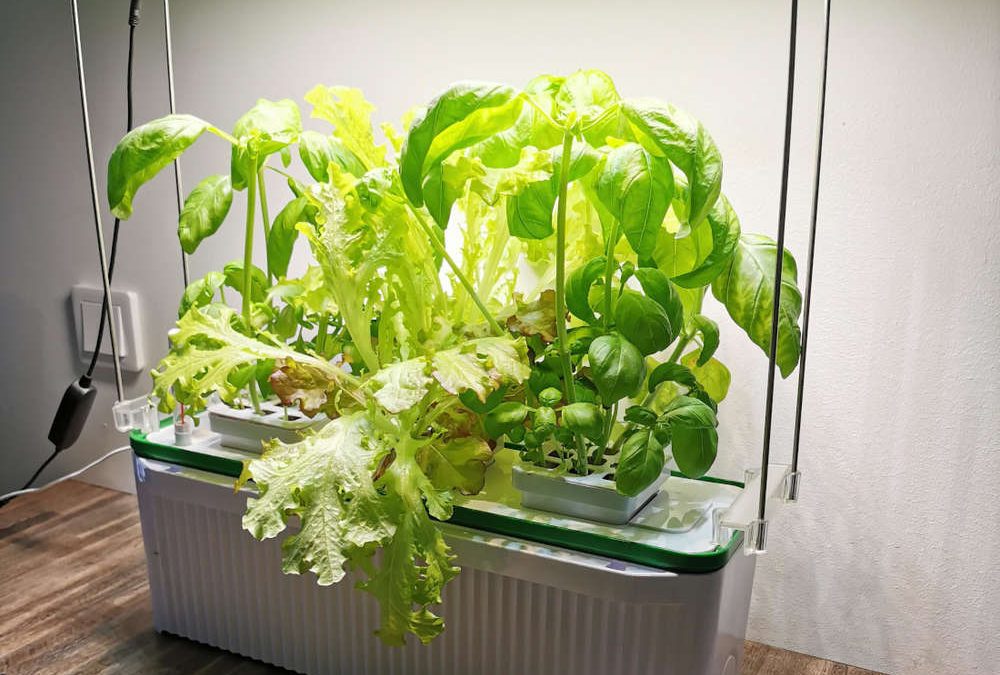Contents
- 1 The Ultimate Guide to Starting a Smart Indoor Garden
- 1.1 Why Choose a Smart Indoor Garden?
- 1.2 Key Features of Smart Indoor Gardens
- 1.3 Best Plants for a Smart Indoor Garden
- 1.4 Setting Up Your Smart Indoor Garden
- 1.5 Advantages Over Traditional Indoor Gardening
- 1.6 Extra Tips for Smart Indoor Gardening Success
- 1.7 Common Mistakes to Avoid
- 1.8 Decorating with Your Smart Indoor Garden
- 1.9 Frequently Asked Questions
- 1.10 Recommended Products
- 1.11 Outbound Resource
- 1.12 Final Thoughts
The Ultimate Guide to Starting a Smart Indoor Garden
A smart indoor garden combines technology and gardening to help you grow fresh herbs, vegetables, and even small fruits inside your home all year long. With automated features like self-watering systems and LED grow lights, smart gardens make indoor gardening easy and fun, even for complete beginners.
Why Choose a Smart Indoor Garden?
Convenience
Smart indoor gardens reduce the guesswork from gardening. With automatic watering, built-in lights, and app monitoring, your plants receive the right amount of care without daily attention.
Fresh Produce Year-Round
Enjoy fresh herbs like basil and mint, leafy greens, and small veggies regardless of the season. Grow your own salad ingredients or garnishes right in your kitchen!
Space Efficiency
Compact designs allow you to grow multiple plants in small spaces, perfect for apartments or urban homes with limited outdoor space.
Educational and Fun
Great for kids and adults alike, a smart garden teaches about plant life cycles, sustainability, and self-sufficiency.
Key Features of Smart Indoor Gardens
Automated Watering Systems
Smart gardens include built-in water reservoirs and pumps that deliver water precisely when your plants need it. This prevents overwatering and underwatering, two of the most common issues in traditional gardening.
Integrated LED Grow Lights
High-quality LED grow lights mimic natural sunlight, supporting photosynthesis even in windowless rooms. Adjustable light schedules promote faster, healthier growth.
Nutrient Delivery
Many systems come with pre-measured nutrient pods or liquid fertilizers, ensuring your plants get balanced nutrition at each growth stage.
App Connectivity
Monitor water levels, adjust light cycles, and receive reminders from your smartphone. Some apps even provide growth tracking and plant care tips.
Best Plants for a Smart Indoor Garden
- Herbs: Basil, cilantro, mint, oregano, thyme, chives.
- Leafy Greens: Lettuce, arugula, kale, spinach.
- Small Vegetables: Cherry tomatoes, chili peppers.
- Fruits: Strawberries (in larger systems).
Setting Up Your Smart Indoor Garden
Choose the Right System
- Decide on size and number of plants you wish to grow.
- Check if the system supports your preferred plants (some focus on herbs, others on leafy greens).
Assembly and Placement
- Follow the instructions; most systems are simple to set up.
- Place near a power source and in an accessible spot for easy harvesting.
Starting Your Garden
- Insert seed pods or plant plugs.
- Fill water reservoir and add any required nutrients.
- Use the app or control panel to set light schedules and monitor plant progress.
Advantages Over Traditional Indoor Gardening
- No messy soil spills or guesswork.
- Faster plant growth due to optimized light and nutrients.
- Easier for beginners with guided instructions.
- Perfect for urban gardeners with limited space or sunlight.
Extra Tips for Smart Indoor Gardening Success
- Regularly clean water tanks to prevent algae buildup.
- Rotate plants occasionally to encourage uniform growth if light is not evenly distributed.
- Check app notifications and follow reminders for topping up water and nutrients.
- Harvest regularly to encourage continuous growth.
- Experiment with different herbs and greens to find your favorites!
Common Mistakes to Avoid
- Ignoring maintenance alerts: Even smart systems need occasional attention.
- Overcrowding: Stick to recommended plant limits to avoid stunted growth.
- Using tap water with high mineral content: This can cause nutrient imbalances; consider filtered water.
- Skipping cleaning schedules: Leads to mold or bacterial growth inside the system.
Decorating with Your Smart Indoor Garden
- Place on kitchen counters for easy access while cooking.
- Use as a focal point in dining or living areas to add a modern, green aesthetic.
- Pair with hanging planters or trailing houseplants for a lush indoor oasis.
Frequently Asked Questions
Are smart indoor gardens worth the investment? Yes! They save time, reduce errors, and provide a continuous supply of fresh produce, making them a worthwhile investment for plant enthusiasts and food lovers alike.
How much electricity do they use? LED grow lights are energy-efficient and designed to minimize power consumption.
Can I grow flowers in a smart garden? Some systems support small flowering plants, but they are primarily designed for herbs and vegetables.
How long does it take to see results? Most herbs and greens sprout within a week and can be harvested in 4–6 weeks.
Recommended Products
Outbound Resource
Learn more in this Wikipedia article on hydroponics.
Final Thoughts
A smart indoor garden is the perfect combination of technology and gardening. With automatic watering, built-in grow lights, and easy app control, anyone can grow fresh herbs and veggies all year. These systems are ideal for busy people, small spaces, or anyone who loves fresh food and beautiful greenery.
Start your smart indoor gardening journey today and transform your home into a fresh, vibrant oasis!

